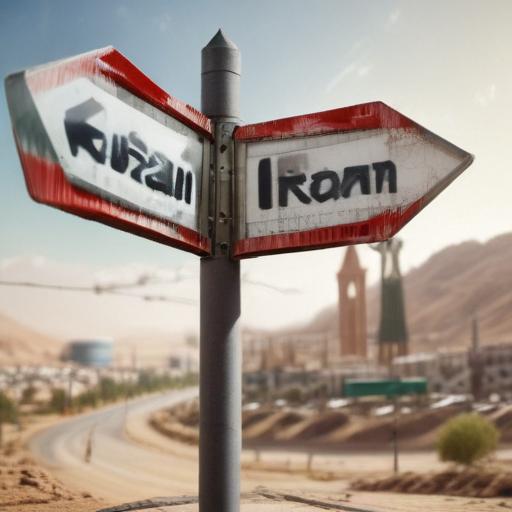Iran’s Supreme Leader Ayatollah Ali Khamenei is currently confronted with unprecedented challenges as Israel asserts control over Iranian airspace and aggressively targets the country’s military leadership and nuclear capabilities. Following the intensified Israeli attacks, which have included significant airstrikes, Khamenei faces a critical decision that could dictate the future of Iran’s geopolitical stance.
Israeli Defense Minister Israel Katz has explicitly threatened Khamenei, stating that he “cannot continue to exist,” emphasizing the severity of the threat to Khamenei’s leadership. The Iranian leader, who has ruled for over three decades, must consider whether to escalate retaliation against Israel or pursue diplomatic options that could potentially exclude U.S. involvement but may require concessions regarding Iran’s nuclear ambitions.
In a recent video address, Khamenei expressed his defiance, asserting that “the Iranian nation is not one to surrender” and warning that U.S. intervention would inflict “irreparable damage” upon them.
Khamenei’s leadership journey has been marked by significant evolution since he took power in 1989, following Ayatollah Khomeini. Initially viewed as an unlikely successor, Khamenei transformed the Islamic Republic, solidifying the power of Shiite clerics while fostering the prominence of the Revolutionary Guard, which now plays a crucial role in Iran’s military and political arenas. This development has positioned Iran as a regional power with considerable influence, particularly after the U.S. invasion of Iraq in 2003 facilitated the rise of pro-Iran factions within the country.
However, despite Khamenei’s efforts to build Iran’s military and economic strength, recent years have seen turmoil within the nation, sparked by significant public dissent against clerical rule and corruption. Protests ignited by grievances over political repression and social restrictions have repeatedly shaken the regime, indicating deep-rooted discontent.
The current geopolitical landscape is further complicated by developments following Hamas’ attack on Israel in October 2023, which has resulted in severe Israeli retaliatory measures and a strategic shift against Iran’s allies. The resulting military pressure has shattered the so-called “Axis of Resistance,” which includes Hamas, Hezbollah, and other pro-Iran groups, marking a critical decrease in Iran’s regional influence.
As Khamenei navigates this precarious moment, the choices he makes could have far-reaching consequences not only for Iran but for the broader Middle East. His leadership, once characterized by control and regional ambition, now stands at a crossroads, facing both extraordinary internal and external pressures.
Khamenei’s ability to adapt and respond to these multifaceted challenges will be closely watched, as the potential for both conflict escalation and diplomatic resolution hangs in the balance.
